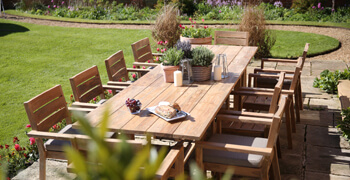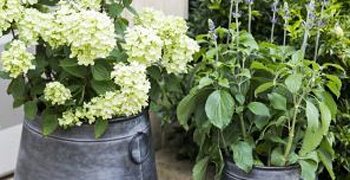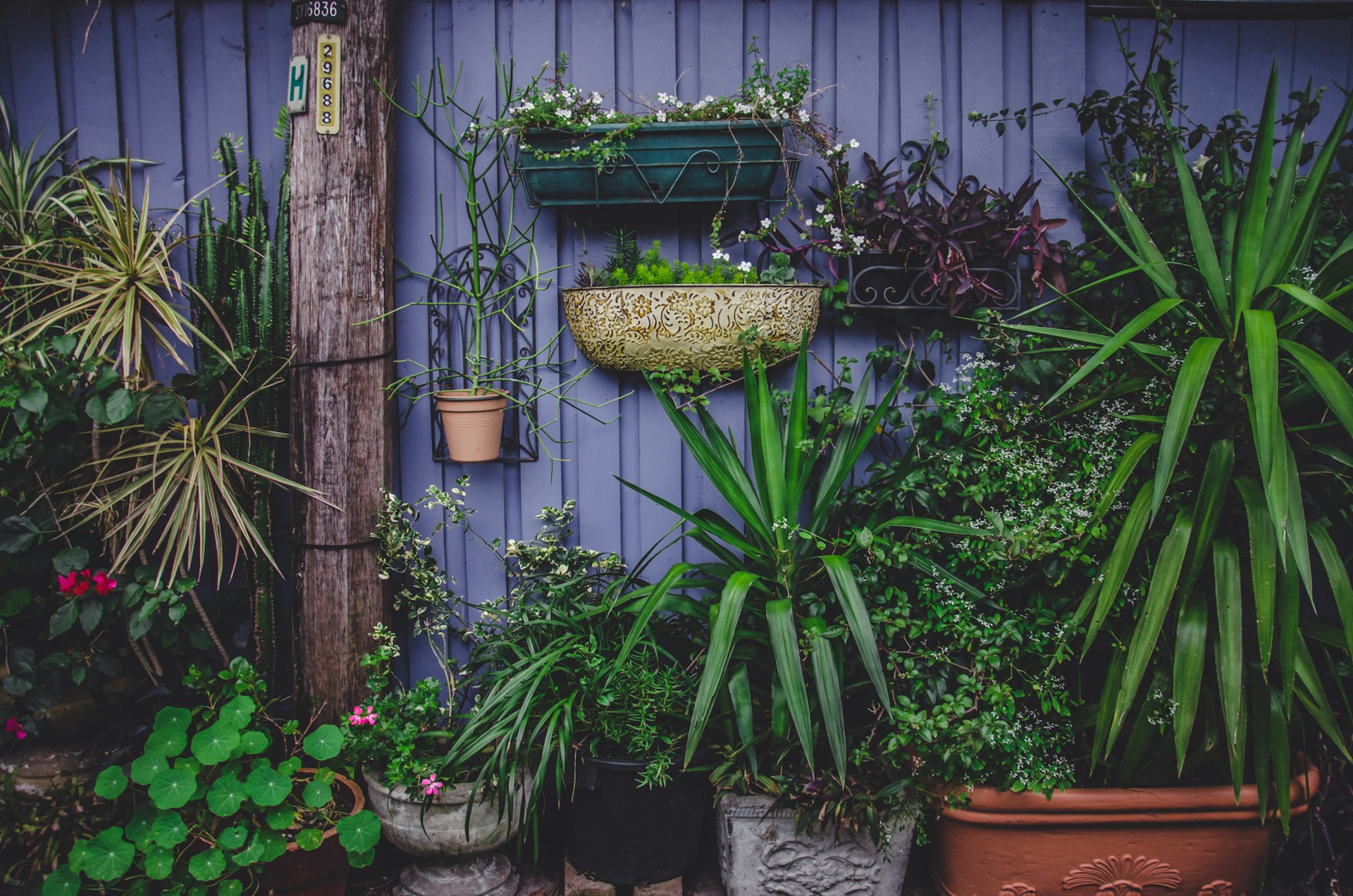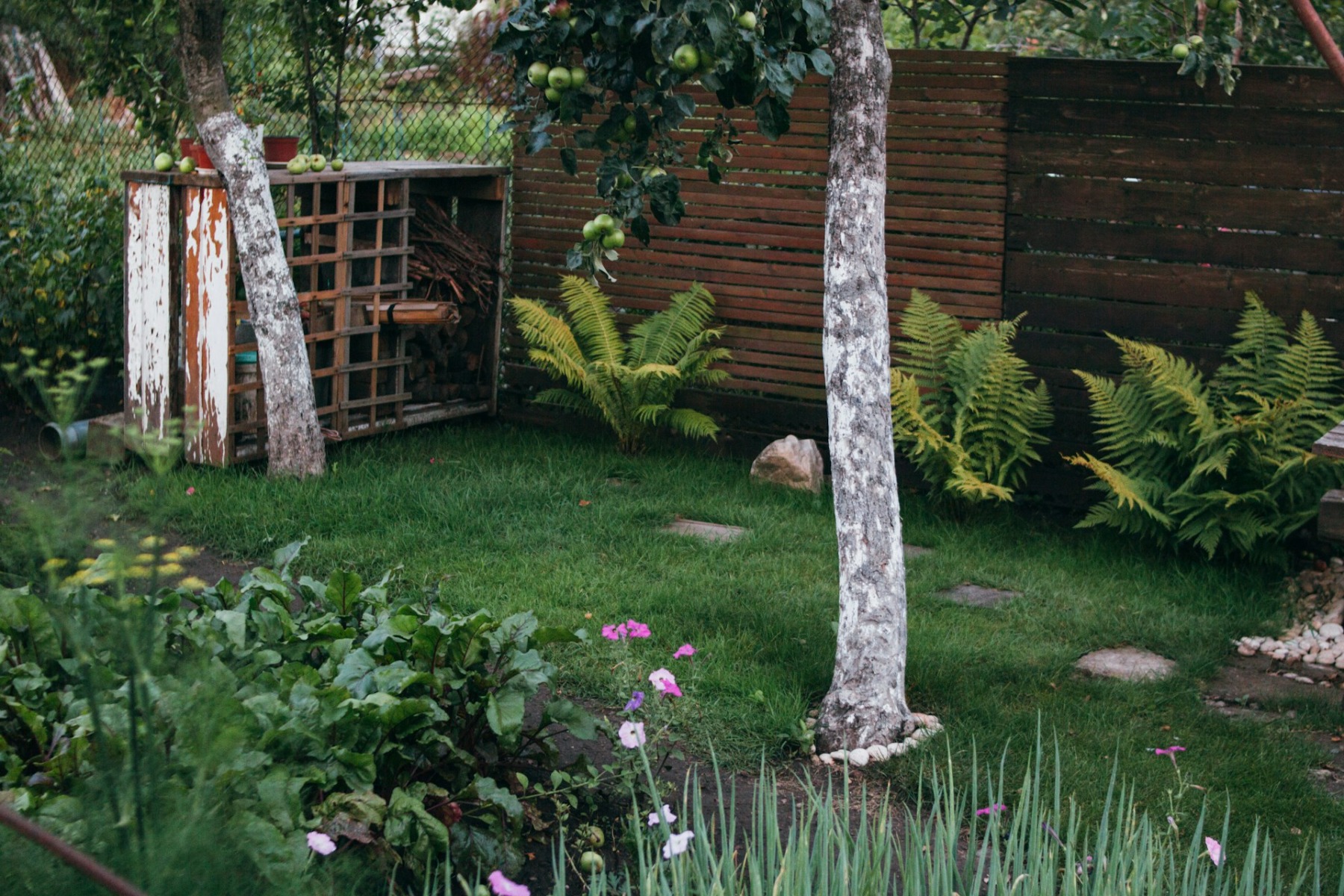-
Garden Furniture
- View All
-
Relax & Dine
- Relax & Dine
- Benches
- Chairs
- Tables
- Daybeds and Sofas
- Table and Chair sets
-
Wicker & Concrete
- Wicker & Concrete
- Wicker Furniture
- Polished Concrete
- Reclaimed Furniture
- Sun Loungers
- Coffee Tables
- Accessories
-

-
Collections
-
Home Furniture
- View All
-
Living Room & Dining Chairs
- Living Room & Dining Chairs
- Living Room
- Dining Chairs
- Conservatory
- Dining Tables
-

-
Sale
-
Outlet
-
Our Story
How to Choose Garden Colour Schemes

The importance of garden colour schemes should not be overlooked when designing a garden. They create the gentlest of brushstrokes that define the mood and soul of your outdoor sanctuary, dictating the ambiance as subtly as the ever-changing light.
Selecting the best colour schemes for your garden, or outdoor furniture, is more than a mere afterthought; it involves a harmonious blend of nature's colour palette with the architectural grace of your home, ensuring that every hue complements the existing structures in your garden.
Understanding colour relationships
When thinking about colours for your outdoor space, the first thing you will need to understand are the subtleties of colour relationships, or the colour wheel spectrum. This will help you make use of the right colour schemes that match your personal style.
Complementary colours
Imagine vibrant red roses against a lush backdrop of green foliage. This is a classic example of complementary colours at play. These duos are unlike each other yet complement each other’s presence.
Analogous colours
For a visual composition that feels naturally cohesive, use analogous colours. These colours are close neighbours on the colour wheel, like the mellow cadence of a sunset with red and yellow or the forest foliage in varying shades of green, creating a smooth visual transition.
Monochromatic colour
Sometimes, the most impactful backdrop can be achieved using the simplicity of a monochromatic colour scheme. Varying shades of a single hue, whether it's the light shades of purple or the sunny spectrum of yellow, can add more depth and character without overwhelming the senses.
How do I choose a colour scheme for my garden?
The right colour palette not only complements your style but also enhances the natural beauty of your garden. To help you choose one, it can be helpful to consider the following factors:
Architectural harmony
Look to the colours within your home for inspiration, so your outdoor space can be a continuation of your indoor aesthetic. Opt for colour schemes that harmonise with the hues of your home, thus creating a cohesive and visually pleasing transition from the inside out.
Seasonal dynamics
Embrace the ebb and flow of seasonality by adding a variety of perennial plants that bloom at different times of the year. This adds an interesting layer of dynamic beauty to your garden, adapting to seasonal changes and transitioning gracefully across seasons.

Simplified colour palette
Choose two primary colours for a simplified yet effective scheme. It can also be useful to consider the brightness and saturation of your chosen colours to ensure they complement each other.
Balance transition
You can also try implementing a balanced proportion of colour schemes, with 80% of your plant colours being primary and 20% serving as complementary or accent shades. Also, plan for smooth colour transitions between areas and avoid abrupt changes that can fragment your garden’s visual flow.
Use mood boards
Creating mood boards can be helpful for predicting the visual impact of different colour schemes. Piece together plant colours, textures, garden wall colour ideas, and even garden furniture colour schemes.
Also, decide where you want the eyes to land first. Perhaps a splash of bright colour schemes with red poppies or an elegantly understated arrangement of blue hydrangeas as focal points.
You can also test with colour temperatures. Warm colours ignite energy and intimacy, while cool colours infuse serenity and breadth. Mix warm and cool accordingly to sculpt your garden’s emotional contour.
What is the trending garden colour scheme this year?
This year, it seems to be all about ‘eco-friendly tones’. Moving away from stark whites and bold primaries, the trend focuses on soft, nature-inspired colours that blend seamlessly with the landscape of the garden.
These hues are not just reserved for plant colours but are making their way into garden wall colour ideas and garden furniture colour schemes, promoting a sense of unity, timelessness and sustainability.
Colour ideas for garden fences, sheds, and walls
Here are some colour scheme ideas to enhance the visual appeal of your garden's features:
- Align the colours with your home's aesthetic. For example, a garden wall colour that reflects the accents of your home can bridge the indoors and outdoors, creating a seamless colour transition.
- Choose a primary colour to set the tone—perhaps the serenity of blues, the depth of eco-friendly tones, or the vivacity of bold and bright reds—to inject the desired emotional resonance into your garden space.
- For a timeless look, blend your colour selection with neutrals like whites, greys, and browns. They can complement any colour and offer a restful backdrop to let your chosen palette shine.
- Size does matter in garden design, and your colour choices can visually expand or cosy up the space. Lighter tones offer an airy openness, while darker hues cosy things up, perfect for creating an intimate atmosphere.
- Experiment with colour schemes, but be strategic. Too many contrasting tones can easily overwhelm and disrupt the mood you wish to convey.
Garden furniture colour ideas
Choose outdoor furniture colours that not only complement, but also harmonise with your garden's existing colour schemes. Here are a few suggestions to guide your choice.

Neutral
Timeless classics like white, black, and grey are preferred colour schemes for anyone seeking a sophisticated and modern appearance, like concrete garden furniture or outdoor wicker furniture. Whether it's the crisp purity of white brightening your garden spaces or the grounded elegance of grey providing the perfect counterbalance to vibrant plant colours, these neutral shades are great garden furniture colour ideas.
Colourful
Choose colourful accents that express your garden's character. Cool blues that portray a refreshing oasis, pastel hues for a tranquil escape, metallics for an eye-catching sparkle, or different shades of green that accentuates the natural lushness. Each addition is your personal narrative reflected in your garden's aesthetic.
Eco-friendly
Garden furniture made using sustainable materials is not only environmentally friendly and long-lasting, but they also exude a unique charm, adding a gentle touch of nature to your outdoor living space. From the rich golden brown colour of reclaimed teak furniture to the light grey and sandy undertone of wicker, sustainable garden furniture can add more eco-friendly tones to your outdoor living space.
All in all, choosing garden colour schemes is about embracing the colour palettes that reflect your style. And don't shy away from experimenting.
Looking for garden furniture ideas to match your color schemes? We can help.